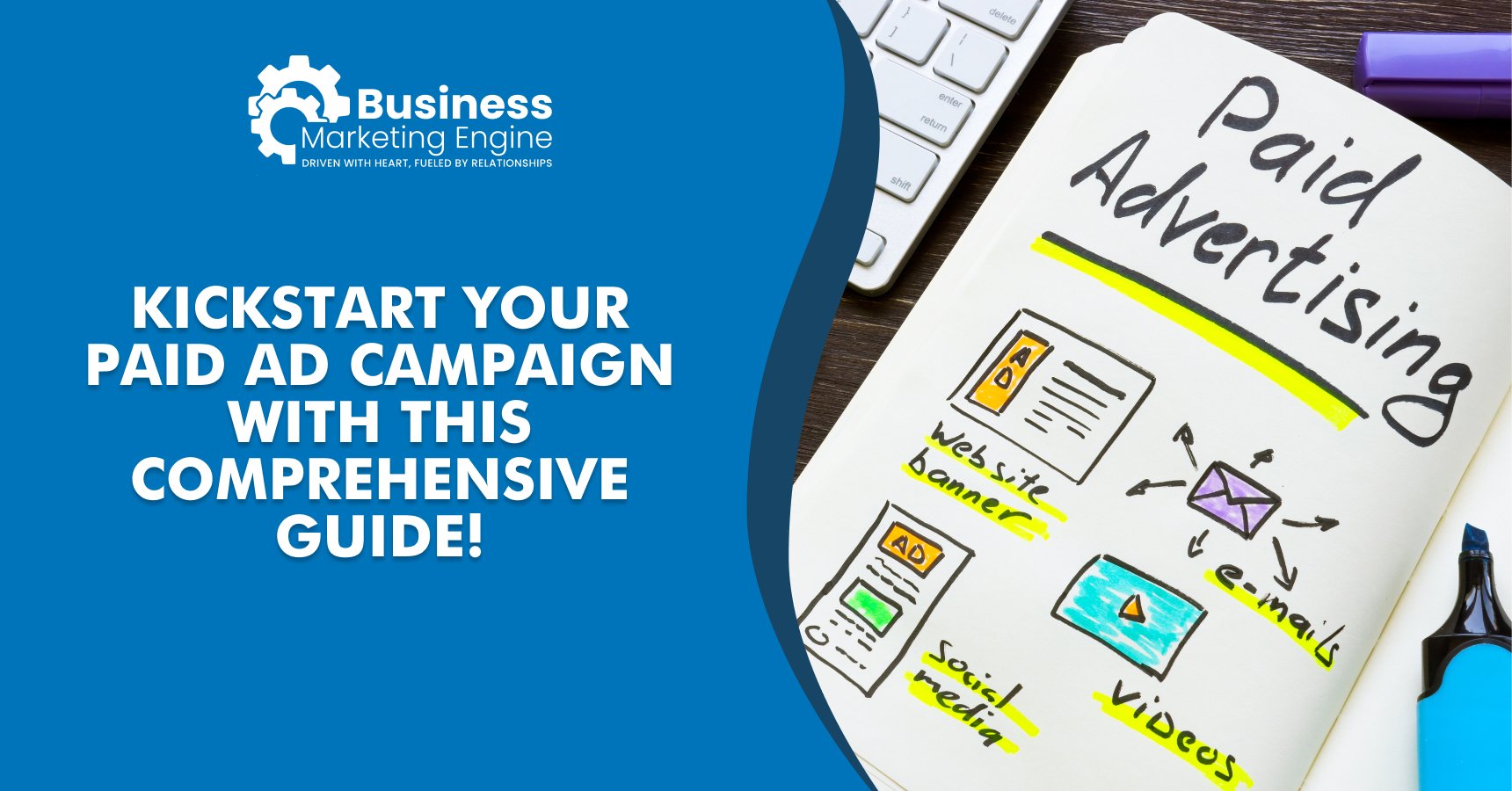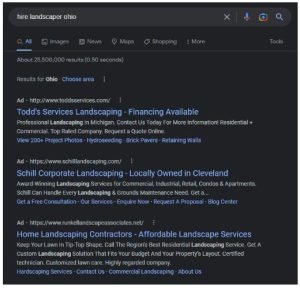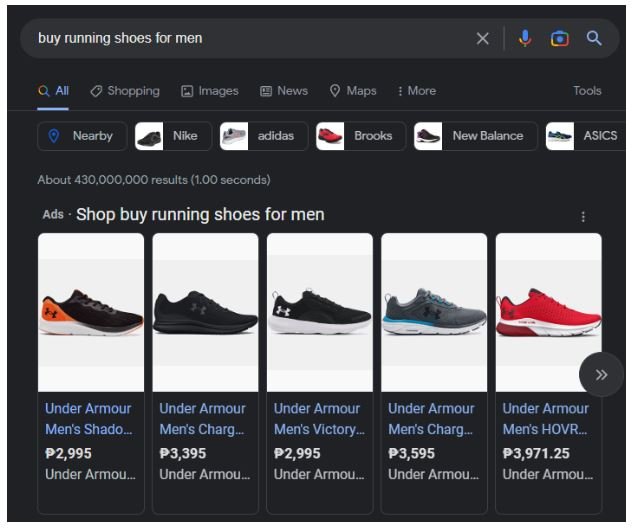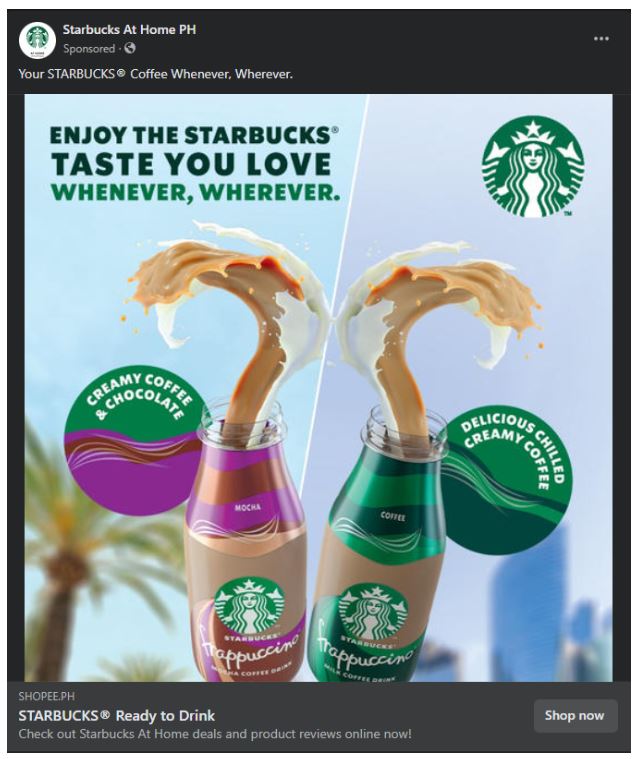Have you ever Googled a specific service only to view a results page packed with businesses offering those same services?
When was the last time you saw a social media ad featuring the product you have been itching to buy?
Did you ever experience seeing an online ad about the e-commerce you last visited?
How the internet knows so much about our interests may seem like black magic, but this is nothing mystical. These are called paid ads, and the logic behind them is plain and simple:
When you surf the web, you resign your rights to browsing privacy. Every digital door you open leaves breadcrumbs that robots inscribe to use against you. Finally, business owners engaging in paid advertising campaigns can send you ads tailored to your interests.
The rise of paid ads marketing is all thanks to the internet age because with digitalization comes evolution.
In the ever-evolving business landscape, paid ads have become an essential marketing tool for businesses worldwide. Gone are the days when traditional marketing strategies like print and radio ads dominated the scene. People’s eyes are no longer glued to mind-numbing TV screens and colossal billboards.
The emergence of digital advertising platforms has given businesses new cost-effective opportunities to reach their target audience precisely. With the internet’s search patterns and complex algorithms, people will see the ads they want.
In other words, paid advertising gave entrepreneurs like you a first-class ticket to:
- Reach their intended audience
- Generate more leads
- Increase sales opportunities
- Boost web traffic
- Skyrocket your revenue
- Grow your business
… and you can leverage paid ads to dominate your category too!
The golden question that remains is: are you?
If not, this article is for you. Discover everything you need to know about paid ads. From what they are and their different types up to how to launch your own campaign, we’ll cover them here.
What is Paid Advertising?
Paid advertising is an online marketing strategy where businesses bid to show their ads on search engines or social media platforms. Depending on their bid, business owners can display their advertisements in real time based on a user’s search.
This advertising model is often referred to as pay-per-click (PPC) advertising and is used to drive traffic to a website. As the name suggests, you will pay for every user who clicks on your ad.
To understand paid advertising better, you must treat the activity like an auction.
In an auction, the aim is to outbid your competition to win the contended merchandise. The auctioneer collects the bid, and the highest bidder gets the item. In paid advertising, you are one of the bidders, and Google takes all of your offers.
For example, let us say you are targeting people who search for “trenchless pipe installation in Pennsylvania.” Competitor pipe installer companies servicing in Pennsylvania may also bid for that keyword. If you bid at 25¢, while they price the keyword at $1, Google will display their paid ads over yours.
But here’s the catch: you need to know your competitors’ bids.
That said, you have to keep watch and optimize your strategy. If your ads are not showing, try increasing your bid incrementally to see improvements. To keep things simpler, choose a ceiling budget for PPC daily.
It is a gamble that can shift the tide for your business. This type of advertising helps companies reach new audiences, generate leads and increase sales opportunities. Plus, it’s a great way to get your products and services in front of the right people at the right time.
So, are you sold on buying paid ads? Doing a paid ads campaign is a complex activity that takes time and patience to learn. While you can attempt to do it yourself, we recommend otherwise. Your team needs you to guide and lead them, so focus on that and leave the advertising to the pros.
Business Marketing Engine can help you craft the perfect paid aids campaign for your business. From Facebook to Google, even LinkedIn and Instagram, we have them all covered.
Book a free call with us, and let’s talk about it.
SEO vs. PPC
The digital marketing landscape is riddled with jargon and abbreviations, two of which are PPC and SEO. We’ve covered pay-per-click ads or PPC earlier, so in this section, we’ll explore SEO and how it differs from PPC.
SEO, or search engine optimization, is optimizing web pages to appear on Google’s search engine result page. Exceptionally optimized webpages appear on the first page results of a Google search query. Conversely, poorly optimized web pages land at the bottom of the barrel, a.k.a. pages two and beyond.
Unlike pay-per-click or PPC ads, SEO is not a form of advertising but an optimization process.
Implementing SEO practices enables webpages to bag high positions in Google’s “organic ranking.” In PPC, you pay Google to get your ads to appear on top of search results, otherwise called “paid ranking.” Unless you hire an SEO specialist, implementing SEO practices does not involve payment.
Pro tip: Any Google search result with “Ad” written beside the web URL is a paid ad. All other effects after the paid ads are organically ranking results.
5 Common Types of Paid Ads
A paid online advertising strategy sounds easy. But there are nuances to paid ads that you must understand first before engaging in one.
For instance, paid ads are called PPC ads or search ads. However, they are only one variety of paid advertising. In reality, there are five common types of paid advertisements, and we’ll explore them below:
Search Ads
Search ads, also known as PPC ads or Google Ads, are the most basic form of paid ads. Google pioneered this first-ever self-service advertising platform for businesses on October 23, 2000. And after more than two decades, the search engine giant’s then Google Adwords underwent massive developments. Today, many marketers and business owners know it as Google Ads.
Search ads are the sponsored results on top of search engine results, typically bearing the “Ad” branding besides the URL. Advertisers only pay for every click that their ad receives.
Not only Google but even other platforms have their variation of search ads. For example, Bing has Bing Ads rivaling Google’s search ad system. While Google sweeps Bing off the floor in popularity, Bing’s search ads have their pros too:
- Better reaches 35 to 54-year-old users
- Up to 70 percent more affordable than Google Ads
In other words, it’s crucial for business owners like you to maximize your reach by utilizing both Google and Bing paid ads.
Display Ads
Have you visited web pages before that had visual ads, typically occupying set portions in a web interface?
Those are called display ads, a popular form of paid ads.
Unlike search ads, display ads appear on partner websites and showcase visuals to capture users’ attention. They usually contain an image or video coupled with some copy. Display ads are highly customizable, making them ideal for businesses that want to communicate a message through visuals or videos.
Display ads can capture various portions of a website. For this reason, the Interactive Advertising Bureau set a criterion for display ad sizes:
- Medium rectangle: 300 x 250 pixels
- Large rectangle: 300 x 600 pixels
- Leaderboard: 728 x 90 pixels
- Wide skyscraper: 160 x 600 pixels
- Mobile leaderboard: 320 x 50 pixels
Shopping Ads
For business owners that sell products, shopping ads are the best ways for customers to find your products. They are also referred to as product listing ads or PLAs, which appear at the top of a Google search result page. Like search ads, they are positioned above organic results and bear a “sponsored” branding above the list.
Buying shopping ads is far more effective than simply promoting your store because shopping ads cater to precision. Shopping ads feature the product’s basic and relevant information like the name, image, price and seller. In other words, you promote the exact product your buyer is searching.
Check the example below for running shoes:
Remarketing Ads
Let’s face it. Only some websites visit or product view results in conversion or checkout. Some get lost in oblivion after a user exits your domain and proceeds with their day.
But what if they wanted to buy the item but needed to remember? Thankfully, remarketing ads can help you save the day.
Remarketing ads are paid ads targeted at people who previously visited your website but did not convert. Remarketing ads are also called retargeting ads because they specifically target previous visitors. This type of paid ad enables businesses to re-engage customers and send them back where they left off.
Remarketing ads come in display ad formats. With a compelling ad copy, you may get a purchase on the way!
Social Ads
The rise of social media in recent years pushed developers to create an advertising platform for different networks. For example, Facebook, Instagram, LinkedIn and TikTok have advertising networks to help businesses.
In some instances, social ads perform better than search ads because of social media’s sheer user count. Almost half of the human population uses Facebook, meaning your market may be within that number. Therefore, advertising on Facebook allows you to reach audiences that other marketing tactics never could.
This could be said of other social media platforms, depending on the desired audience. It’s best to assess your target market before finalizing your paid online advertising strategy. This ensures maximum ROI for your efforts and investment.
Below are some examples of social media paid ads:
- Facebook Ads
- LinkedIn Ads
- Instagram Ads
- Youtube Ads
- Tiktok Ads
What are the Benefits of Paid Ads to Business Owners and Agencies?
Remember this: everything in this world is pay-to-earn.
As long as you pay for a service, you get better rewards than if you try to wing it. While there are instances when organic defeats paid markets— these are the exemptions, not the rule.
Online ads and paid advertising campaigns are crucial channels to ensure your company’s success. And the benefits of paid ads will speak for themselves. If you’re wondering what you can get out of these campaigns, continue reading below:
Fast Results
Startups and small businesses with limited reach pale in comparison to household names. That doesn’t indicate their quality could be better. Big brands often use overarching marketing campaigns that put them on the map. Smaller brands need that exposure.
Compared to paid ads, ranking organically through search engine optimization takes time. It takes a few days for Google to index a new webpage and several weeks to get the page ranking high.
Paid ads provide faster results to bag the top spot right off the bat.
Highly Trackable and Measurable
All forms of paid advertising allow users to optimize their paid marketing campaigns. This is possible by accessing advertising performance and data provided by the platform. You can use this information to see whether your ads work or what tweaks you must add.
Ability to Target Specific Audience
Another benefit of paid advertising is its targeting capability, which is not valid for organic promotions. Using paid ads allows entrepreneurs to choose the demographics of the ad’s recipients.
Conversely, only the followers or subscribers of a brand can see organic posts. As for organic searches, you can only be visible when your brand positions on the first page of Google results.
Performs very well with SEO
It is not wise to say you choose paid ads over implementing SEO practices because both marketing practices have their edges. Paid ads work perfectly for reaching specific audiences, while SEO is excellent for brand reputation.
The best practice is to combine SEO and paid ad campaigns for the best results.
Affordability
The affordability of paid ads depends on various factors. For instance, it depends on the keyword you are ranking for, your desired reach, duration and competitiveness.
Still, compared to spending all your dime on search engine optimization ALONE, using paid ads gives immediate results. Therefore, using paid ads is helpful for entrepreneurs struggling to get their companies off the ground.
Steps in Launching a Paid Advertising Campaign
If you’re keen to launch your paid advertising campaign, we prepared these beginner steps to guide you:
Prepare Your Landing Page
Paid ads are a mere step in a whole chain of marketing procedures. Say you create an ad, and a user clicks it; where will it take them? Destinations matter for paid ads; that is where the landing page comes in.
As the name suggests, it is where users land should they click the ad. While you can use your homepage as the landing page, it is not advisable. We recommend you create a standalone landing page that will get people engaged and compelled to buy.
Here is an example of a powerful landing page for landscaping companies.
A landing page must continue the conversion previously initiated by the ad. Any disconnect between the paid ad and the landing page can discourage leads from pursuing it.
Define S.M.A.R.T. goals
In step with the first tip, the next one is clearly defining your goals. What exactly do you want to achieve with your paid advertising campaign?
- Do you want to get more likes on your page?
- Increase website traffic?
- Generate leads and sales?
SMART goals allow you to explicitly define your needs, which will then influence everything else in your strategy.
Set Your Budget
Paid ads are paid ads for a reason— they are paid.
Preparing a daily or monthly budget and setting clear expectations are crucial. Jokes aside, your set budget can make or break your campaign. Even if you craft killer paid ads, competitors with more budgets can stomp your efforts.
Again, your budget will depend on your goals. If you are looking for more Facebook likes, Google search ads are unnecessary. Conversely, a different set of platforms for brands to generate leads will be necessary.
Segment Target Audience
Speaking of budget, another budget depleted is your ad reach. It is crucial to be very specific to keep your ads as targeted as possible while remaining affordable. The broader your targeted demographics, the more you will spend to reach them.
For instance, you are selling skincare products. Targeting females between the ages of 16 and 34 may seem enough. But if you are looking to maximize your budget, you may still narrow the list down. For example, targeting females between the ages of 20 and 28 who live in major cities is an economical approach.
Create Your Ad and Choose a Platform
Once you have determined your target audience, creating the ad and choosing a platform is time. You can create ads in various formats depending on the platform you choose. For example, Facebook offers different ads, such as text-based, image-based, videos, and carousels.
At this point, choosing an appropriate platform also ensures your paid ad reaches its intended audience. Different platforms offer different tools and cater to various audiences. As such, your ad format will depend on the platform and market.
For example, TikTok ads and short-form videos work best on teens and kids. Meanwhile, chic and glamorous women swerve toward Instagram and ads with tasteful images more than others.
Run Ad Campaign
When your goals, landing page, budget and ad are all straightened out, it is time to kickstart the campaign. This is where you will invest your money to get your ad up and live.
Before launching, it is essential to remember that paid ads are not a one-time thing. It is an ongoing process that involves constant monitoring, optimization and tweaking.
Measure, Analyze, Adjust and Repeat
Speaking of optimization, remember these four steps when refining your ad strategy:
- Measure
- Analyze
- Adjust
- Repeat
Once the campaign goes live, observe your ad’s performance and make tweaks to keep it relevant and effective. Measure its performance and the numbers you get— are they as anticipated? If yes, you are doing something right and keep that up. If not, analyze what needs adjustment and apply accordingly in your next campaign.
Remember, not one blanket ad format works for all platforms. Each platform creates policies and updates that change the competitive advertising landscape, so be observant.
Running a paid ads campaign is complicated, but anyone can learn it with enough patience, money and time. However, if you have none, why don’t you leave the pros to it while you focus on the important stuff?
Business Marketing Engine has cracked the code to effective paid ads marketing campaigns. We can help you elevate your business above the fold through the power of paid ads!
Book a free call, and let’s discuss how this works.








